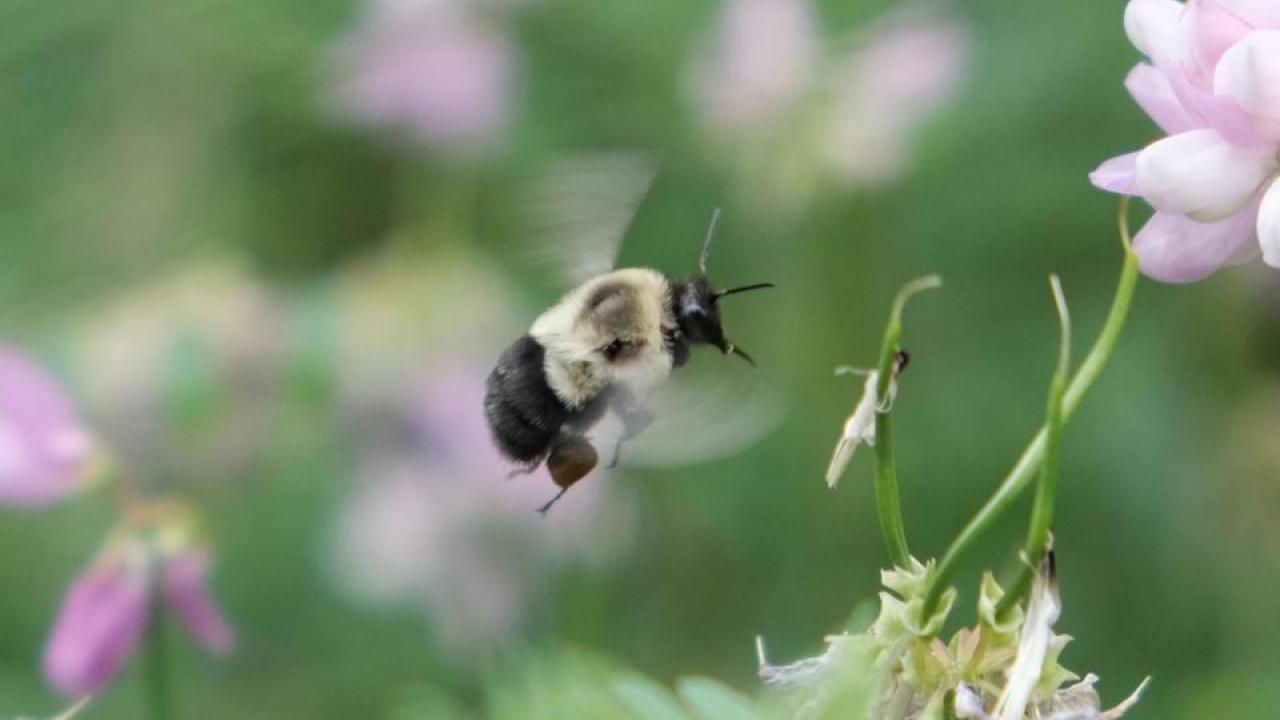
Bumblebees Carry Heavy Loads in Economy Mode
Bumblebees are the big lifters of the insect world, able to fly back to the hive with almost their own body weight in nectar on board. A study published Feb. 5 in Science Advances shows how they do it — and that bees can show more flexibility in behavior than you might expect from a bumbling insect.
“They can carry 60, 70 or 80 percent of their body weight flying, which would be a huge load for us just walking around,” said researcher Susan Gagliardi, a research associate in the College of Biological Sciences at the University of California, Davis. “We were curious to see how they do it and how much it costs them to carry food and supplies back to the hive.”
Gagliardi and Stacey Combes, associate professor in the Department of Neurobiology, Physiology and Behavior, measured the energy expended by bumblebees flying in a specially designed chamber — an emptied snowglobe. They attached small pieces of solder wire to the bees to adjust their weight.
